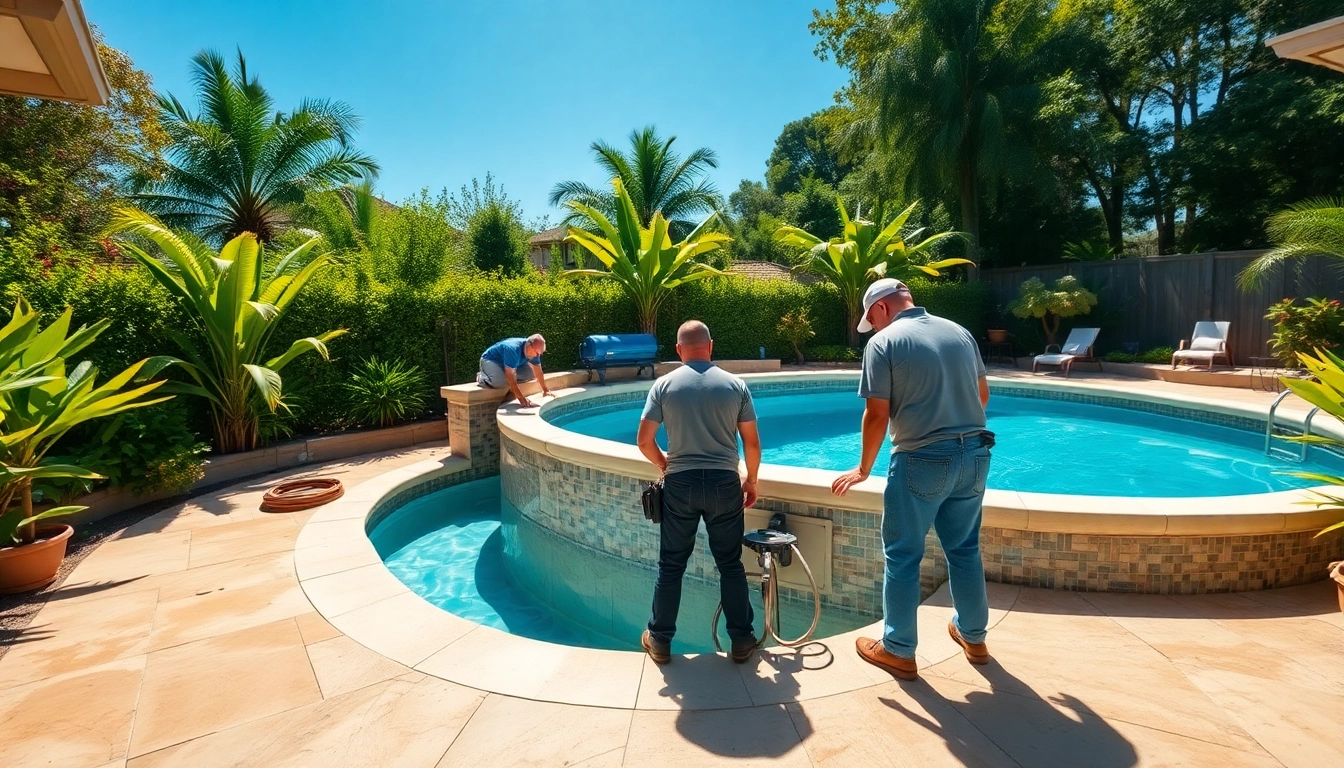Essential Guide to Swimming Pool Installation: Tips, Costs, and Best Practices
Understanding Swimming Pool Installation
What is Swimming Pool Installation?
Swimming pool installation refers to the comprehensive process of setting up a swimming pool, which encompasses various stages, from planning and site selection to construction and finishing. This multifaceted endeavor involves considerable preparation, including selecting the pool type, understanding local regulations, and executing the installation process itself. As a crucial investment for many homeowners, the swimming pool installation process must be approached with careful consideration and expertise to ensure successful implementation.
Importance of Professional Installation
While it might be tempting to consider a DIY approach for swimming pool installation, enlisting a professional service can provide significant advantages. Expert pool builders not only possess the necessary skills and tools but also understand local regulations and safety requirements. The expertise of professionals can ensure that the pool is built correctly, thereby minimizing the risk of costly errors and unforeseen challenges. Furthermore, professional installation often comes with warranties that provide peace of mind regarding the longevity and functionality of the pool.
Types of Swimming Pools
Understanding the different types of swimming pools is essential when planning for installation. The three primary types include:
- Inground Pools: These pools are constructed by excavating the ground and building the pool within it. They can be made from various materials including concrete, fiberglass, and vinyl liner.
- Above Ground Pools: These pools are typically easier and faster to install compared to inground versions. They are constructed above the ground and can be either permanent or semi-permanent.
- Infinity Pools: Known for their vanishing edge design, infinity pools create a visual effect of water extending into the horizon. They require complex engineering and are typically more costly to install.
Planning Your Swimming Pool Project
Assessing Your Space and Budget
Before diving into a swimming pool installation, it is crucial to assess the available space and establish a budget. The size of the area where the pool is to be installed will dictate the type and size of the pool suitable for your property. This assessment should also consider access points for construction equipment and potential landscaping work. As for budgeting, it should encompass not only the initial installation costs but also maintenance expenses, utility costs, and potential repairs.
Choosing the Right Pool Type for Your Needs
Your lifestyle and preferences play a pivotal role in determining which type of pool is ideal for you. If you have children or plan to host pool parties, a larger inground pool might suit you well. Conversely, if you prefer a more budget-friendly, easy-to-install option, an above-ground pool might be more appropriate. Engaging with a professional design team can help you evaluate your options based on your specific needs.
Local Regulations and Permits
Complying with local regulations is a crucial step in the swimming pool installation process. Most municipalities require permits before beginning any construction. The rules may cover parameters such as pool depth, fencing requirements, and safety features. Researching these regulations early on can save you time and money in the long run.
Step-by-Step Swimming Pool Installation Process
Site Preparation and Excavation
The installation journey begins with site preparation and excavation. This involves measuring, marking, and digging the area according to the specified dimensions of the pool. Proper excavation is critical as it lays the groundwork for everything that follows, from the pool structure to plumbing and electrical elements. Correct grading and drainage must be factored before proceeding to ensure water flows away from the pool rather than pooling around it.
Installing Pool Frames and Liners
Once the excavation is completed, it’s time to install the pool frame and liners. Depending on the type of pool, materials vary: concrete pools are reinforced with steel or polymer walls, fiberglass pools are molded shells placed in the excavation, while vinyl pools involve setting wall panels and a vinyl liner over them. Each installation requires careful attention to detail to prevent leaks and ensure durability.
Finalizing Pool Features and Accessories
After the pool structure is in place, the next step is to finalize features and accessories that enhance the swimming experience. This includes installing stairs, lighting, diving boards, water features, and safety barriers. Choosing quality accessories can significantly contribute to enhancing the pool’s value and usability in the long term.
Common Challenges in Swimming Pool Installation
Dealing with Site Limitations
While planning for your swimming pool installation, you may encounter unforeseen site limitations. Factors such as rocky soil, wetlands, or zoning restrictions can complicate installation processes. It’s vital to consult with professionals who can offer solutions based on specific site issues, possibly suggesting alternative locations or pool designs.
Cost Overruns and Budget Management
One major concern during installation is the potential for cost overruns. Poor planning or unexpected complications can lead to increased expenses. Engaging in thorough research and delineating a clear budget plan will be integral in mitigating these risks. Additionally, maintain open communication with your contractor regarding ongoing costs during and after installation to avoid unpleasant surprises.
Seasonal Considerations for Installation Timing
The timing of your swimming pool installation can impact both the cost and the quality of your project. Factors like seasonal weather can affect the excavation process, and many contractors may have a busier schedule during warmer months. Consequently, planning your installation in the off-season might result in more availability and better pricing on materials and labor.
Maintenance Tips After Swimming Pool Installation
Regular Cleaning and Chemical Balance
Once your pool is installed, proper maintenance becomes crucial to ensure cleanliness and a safe swimming environment. Regular cleaning should include skimming leaves and debris, brushing walls, and vacuuming the floor. Monitoring chemical balance—particularly pH and chlorine levels—is vital to avoid issues such as algae growth and cloudy water. Professional services are available for those who prefer expert involvement in maintenance routines.
Winterization Techniques for Longevity
Preparing your pool for winter is a necessary procedure that can prolong its lifespan. Winterization involves cleaning the pool, lowering water levels, and covering it with a quality pool cover. Properly blowing out the plumbing lines and adding winterizing chemicals can further protect against harsh weather. Winterization should be considered an integral part of pool ownership to minimize long-term damage.
Upgrading Pool Accessories and Features
As trends and technologies evolve, upgrading your pool’s accessories can enhance its functionality and aesthetics. Consider adding modern lighting, energy-efficient equipment, or smart technologies that allow you to control your pool remotely. Regular upgrades not only enrich your overall experience but can also increase property value.



